Narcissus vs Daffodil vs Jonquils – Differences + Identification
Most people interchangeably use Narcissus and Daffodil to describe perennial spring flowers in the Amaryllidaceous family. Are they the same thing, or is there a difference between narcissus, daffodil, and jonquil flowers?
Narcissus is the botanical name of all varieties of flowers commonly referred to as daffodils in English. Jonquils are a type of daffodil. All daffodils, including jonquils, belong to the genus Narcissus, which is why the two terms are often used interchangeably.
Therefore, jonquil (Narcissus jonquilla) is a type of Narcissus or daffodil.
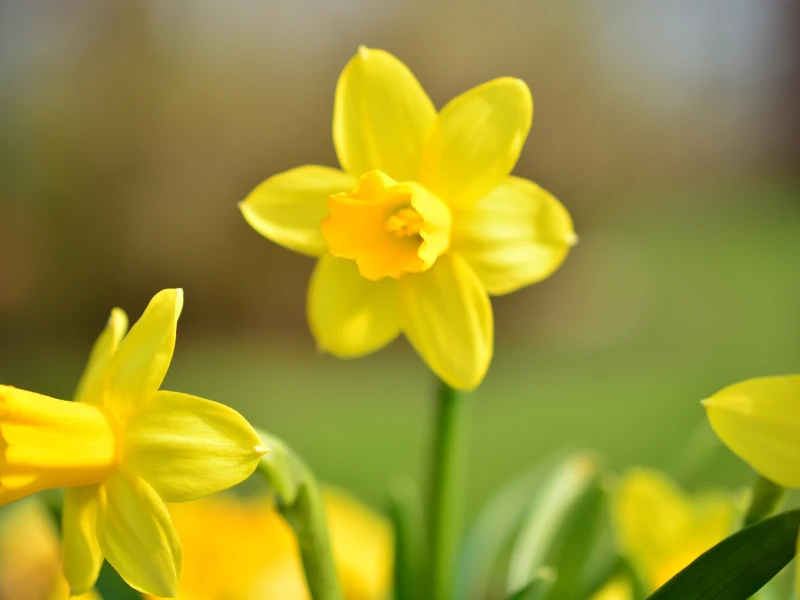
There are over 50 species of Narcissus flowers, with over 32,000 cultivars registered today. These perennial plants predominantly bloom in the spring and produce between 1 and 20 florae on each stem.
Is Narcissus the same as daffodil?
Yes, Narcissus is the botanical name for all daffodil flowers. Daffodil is the common name for all flowers that fall under the genus Narcissus, especially the great trumpet flower forms.
You can use the common name daffodil to refer to any of the flowers that belong in the genus Narcissus, including jonquils.
Why is the daffodil called Narcissus?
All flowers in the daffodil family are called narcissus because the entire flower is poisonous, with the bulb being the most toxic part. The name comes from Greek mythology that references numbness and the imagery of tragic events of passion.
Narcissus originates from the Greek word ‘narcissus’, which means numbness, and relates to the myth of a handsome boy Narcissus who died by the side of a stream of water while admiring his reflection.
In the mythology, young Narcissus takes his own life because of unreciprocated love from his own image, leaving behind an image in the form of the daffodil flower – with a white and golden resemblance – just like the daffodil.
Narcissus vs. Daffodil vs Jonquils – Differences
There’s no difference between narcissus and daffodils except for the former being a scientific generic name while the latter is a common English name.
The difference between daffodils and jonquils is that jonquils are just one of the many types of daffodil flowers that are characterized by various combinations of colors, including white, pink, and yellow. These flowers can come in pastel and intense shades.
Jonquils are the standard yellow daffodils. The interior of their central cylindrical tubular projection assumes a yellow color.
However, there are subtle differences between jonquils and other types of daffodils. Some varieties have slim and fairly pointed leaves, while others, such as jonquils, have slender leaves with round tips.
The corolla in most daffodils is longer than that of jonquils.
Daffodil varieties – identification
Daffodils are bright and fragrant flowers that bloom in the spring. Here are some common varieties of daffodils:
| Companion | Image |
|---|---|
Jonquil |
 |
Paperwhite narcissus |
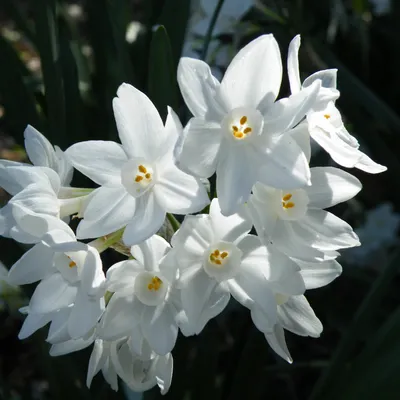 |
Bunch-flowered daffodil |
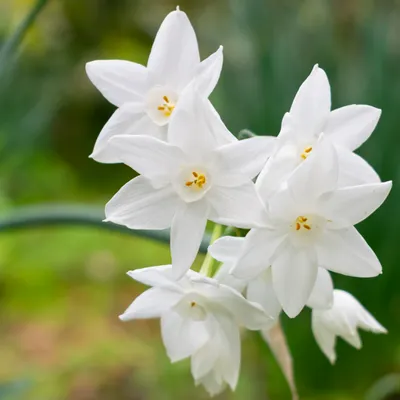 |
Narcissus poeticus |
 |
Wild daffodil |
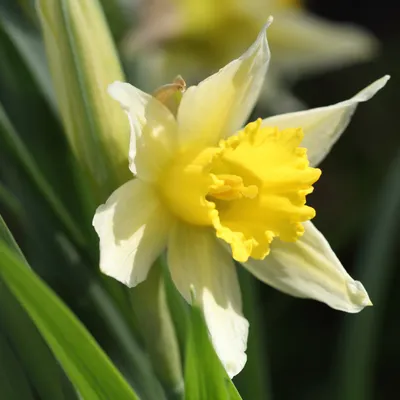 |
Petticoat daffodil |
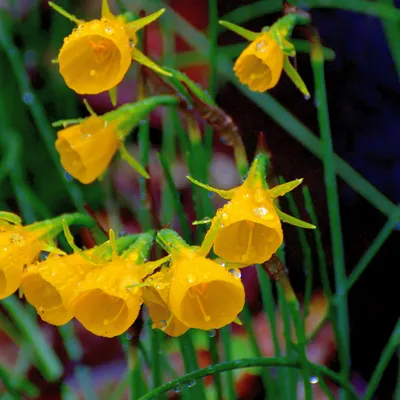 |
Here are some of the features that you can use to identify daffodils:
- Long and narrow tube-shaped stem
- Bright yellow, white, or even orange flowers
- A central trumpet-shaped corolla with three or more petals
- Long and flat leaves
- Underground bulbs that resemble onions
Growing Daffodils and Jonquils
The best time to plant daffodil and jonquil bulbs is in the fall, two to four weeks before winter.
- Select large and high-quality daffodil bulbs that have not completely dried out.
- Dig shallow holes, spacing them at 3-6 inches apart.
- Add organic fertilizer to the prepared planting holes to enhance nutrient levels.
- Place the bulbs in the holes.
- Cover well with a sizeable layer of mulch to keep them moist.
Soil and Light Requirements
Daffodils blossom well in a wide range of moderately fertile, moisture-retaining, and well-draining soils as they are susceptible to rot in water-logged soils. Most daffodils bulbs grow well in neutral to acidic soils, with a few preferring slightly alkaline soils.
Plant daffodils in a site with full or partial exposure to the sun as they blossom well to the exposure of early spring sunshine.
- Apply a high-potash, low-nitrogen, organic fertilizer if the bulbs’ performance is not impressive after flowering.
- Sparingly water daffodils in dry conditions to avoid early abortion of the flowers.
- Cut off plants as flowers fade and retain the leaves for about six weeks to give your garden a tidier appearance.
- Allow daffodils to grow until they die off to give them ample time after blooming to store enough energy in the bulbs for next season’s planting.
Are Narcissus and Daffodils Toxic?
Daffodils contain toxic chemicals like lycorine, making them dangerous to humans and pets. For instance, in humans, if taken in large amounts, daffodils and jonquils can lead to severe problems like irritation to the mouth and throat.
Facts
Here are a few facts about daffodils:
Holiday in Wales
The love of daffodils by the Welsh people is unmatched as they have set its National Flower Day, celebrated on the 1st of March every year.
Daffodils of Happiness:
Most people believe that bestowing someone with a bouquet of daffodils brings happiness. If you spot the blooms, your next year will be full of joy and prosperity.
Benefits for Brain Cancer
Daffodil bulbs contain narciclasine, a natural compound believed to help treat brain cancer.
Pesticide in a Flower
Daffodil bulbs contain poisonous crystals which act as a natural pesticide for insects and squirrels.
Conclusion
Narcissus refers to the genus of plants that are commonly known as daffodils. There are many varieties of daffodil flowers, one of them being the jonquil. As such, there’s no major difference between Narcissus and daffodil.
It is recommended to use Narcissus instead of daffodil in scientific writing.

